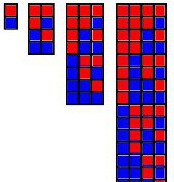

An enumeration is a complete, ordered listing of all the items in a collection. The term is
commonly used in mathematics and computer science to refer to a listing of all of the elements of a
set. The precise requirements for an enumeration depend on the discipline of study and the context
of a given problem. <https://en.wikipedia.org/wiki/Enumeration>

Notes on the "Base Enumeration" Page:

<https://simple.wikipedia.org/wiki/Base_(mathematics)>
In mathematics, a base or radix
is the number of different digits
or combination of digits and letters that a
system of counting uses to represent numbers.
For example, the most common base used today is the
decimal system.
Because "dec" means 10, it uses the 10 digits
from 0 to 9.
Most people think that we most often use base 10
because we have 10 fingers.
A base can be any whole number bigger than 1.
The base of a number may be written next to the
number: for instance,
238
means 23 in base 8
(which is equal to 19 in base 10).
Base 2:
Base 3:
Base 2 is represented by 1 to 7 numerical places
Base 4:
Base 3 is represented by 1 to 5 numerical places
Combined Bases 1:
Base 4 is represented by 1 to 4 numerical places
Combined Bases 2:
The first 15 numbers are represented in bases 2 - 4
The Base 2, 3, and 4 images are combined -for comparison
